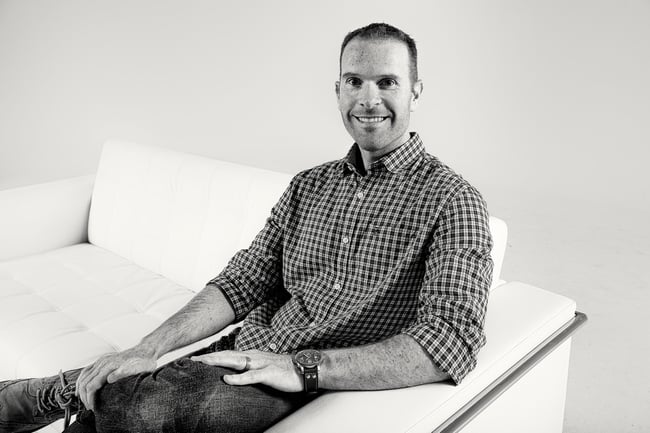Seeing the Small Picture and the Big Picture
Focus on the process in order to reach your outcome goals.

One of the most common pitfalls I find with program managers is that they tend to focus on outcomes, or final products, and forget about the processes or action steps that need to take place in order to reach those outcomes. In many instances, program managers are driven by the club’s key performance areas, such as month-end results (i.e., trainer revenue, number of completed sessions), and their focus is fixed on those bits of data. The key to success is to break down the end results into manageable process goals. If managers and trainers can hit these process goals, they automatically line themselves up for success with the outcome goals.
There are a number of ways to stay connected with your base of trainers as the month progresses. A way to approach reaching an end goal by focusing on the steps that lead there is to remember that whatever we measure will always improve. By focusing on the incremental steps, a program manager can identify departmental concerns as they arise and can act quickly to solve any destructive issues and bring the focus back to steps that lead toward the goal. Any processes (steps) that lead away from the outcome (end goal) are steps that need to be redirected onto the path set out in advance. There are a number of ways to effectively stay focused on the process goals.
Spend some time assessing and defining your key outcome goals, then work backward from those endpoints to determine the weekly and daily goals that will take you there. By focusing on these baby steps, you will see the clear progression to your goals and understand the level of focus and determination required to achieve them.
This stage is also an important opportunity for you as a manager to take a step back and review the goals for the month. Are they realistic and achievable? Can you identify any gaps or weaknesses within your systems? These gaps could relate to process management or to tools that your trainers are lacking but will need as they work toward the outcome goal.
Break Down Each Outcome
If an end goal is to have each trainer drive $6,000 worth of revenue to the club’s top-line revenue each month, that could be perceived as a tough task, and some trainers might feel overwhelmed and “give up” before even starting. But when this end goal is broken down into process goals, it works out as selling one full-hour and one half-hour session in the morning and two full-hour sessions in the afternoon.
How does this work? Take the $6,000 in sales (your outcome goal) and divide by 21.67 working days in the month, which comes out to $277 per working day. Given a per-session rate of $75, that equates to 3.7 sessions per day ($75 x 3.7 = $277), which means one full-hour session and one half-hour session in the morning and two full-hour sessions in the afternoon. This example does not include weekends, so that’s a bonus if you plan to put in some Saturday hours. Manageable? For sure!
Daily one-on-one meetings (with each trainer) should be no more than 10 minutes long. The goal is to review and wrap up any critical areas that need to be addressed from the previous day, and then to focus on the day ahead. With this attention to detail, trainers become accustomed to the constant drive and concentration needed to achieve. In highly competitive clubs, this 10-minute “blast” every morning is just the kick that trainers need to shift their focus away from comparing themselves with their colleagues, discussing how busy or quiet the club is or chatting about the weather (all excuses) and to concentrate instead on making an impact and generating business for the day.
The club’s goals must be addressed and clarified so that management and trainers have the same understanding of that day’s expectations, be it number of sessions completed, low no-show ratios, revenue requirements or other things. Daily meetings are an invaluable tool to raise the urgency level, keep process goals front and center and make sure each trainer is charging in the right direction. In this way no issue is ever more then 24 hours old and all issues are sorted out quickly, leaving trainers ready and energized for the day’s challenges.
Set Daily Targets
During your 10-minute meetings, set realistic, achievable goals for your trainers. Break down the day into two periods: opening until lunch, and lunch until closing. Then set your goals based on club traffic during those time periods (see “Break Down Each Outcome” for an example). Verbalize the daily goals, and then follow up with each trainer at day’s end. Ask for feedback. This system can really spark trainers who need urgency to be successful.
Other process goals could be to meet and greet five people every morning and 10 every evening; get names and contact details of members; or assist one person (for free) in the morning and one in the evening. The key through this process is to keep the urgency high and the focus fresh, and to assess daily what is succeeding and what is not.
A cornerstone of driving delivery from your team is the concept of “right now.” Instill in your trainers the attitude that even if the facility is quiet, as long as there are warm bodies in the club, there is business to be made. This mindset will go a long way toward creating revenue and trainer success. Trainers need to see that they are masters of their own destiny. They respond well to having a focus for the day, rather than an end-of-month goal that seems far away for 3 out of 4 weeks. Once you have created this ethos and attitude, you can take a small step back and allow the team to drive forward—right here, right now! l
The 80:20 rule refers to the law of averages. Within the personal training field, this means that if there are only 10 people training in the club, two (20%) will want personal training (although they might not realize it) and eight (80%) will not. Of course, there will be days when you target only the 80% group and make no sales, and there will be days when you tap into the 20% and make sales. Since it isn’t clear just by looking who falls into which group, the key is
to stay focused on the overall goal of
a continuous canvas, and the law of
averages will work out.
IDEA and its members are passionately committed to improving the health and fitness of all people. We are focused on delivering compelling member value by imparting knowledge, credibility, inspiration, marketability, and personal and professional growth opportunities.
- We believe that ethics come first; fairness and integrity guide all of our decisions and relationships.
- We have a passion for providing
fitness information and education. - Our decisions are guided by the
professional needs of our members.
A—Ask the Question. Get out there and connect daily with as many people as possible, cast a wide net, and embrace rejection because every “no” could be bringing you closer to a “yes”! You have to be speaking to people to generate business, so get out on the floor and communicate with people.
B—Bring Your Game. Know your pitch, steer the conversation in the right direction, and put on your game face. Show professionalism, confidence and competence, and you will generate interest in your services.
C—Close the Deal. Present your packages and prices, and make the sale.
If you can follow the ABCs on a daily basis, you will be well on your way to the end result—achieving your outcome goals.
Darren Jacobson
Darren Jacobson is the innovator of the franchise personal training concept for Virgin Active South Africa, where he manages over 750 personal trainers in 88 health clubs. He holds a bachelorÔÇÖs degree in human movement science and is a featured writer for numerous industry publications. In addition, Darren sits on the IDEA Personal Training Committee and has presented at fitness conventions across South Africa, Canada and the United States.





